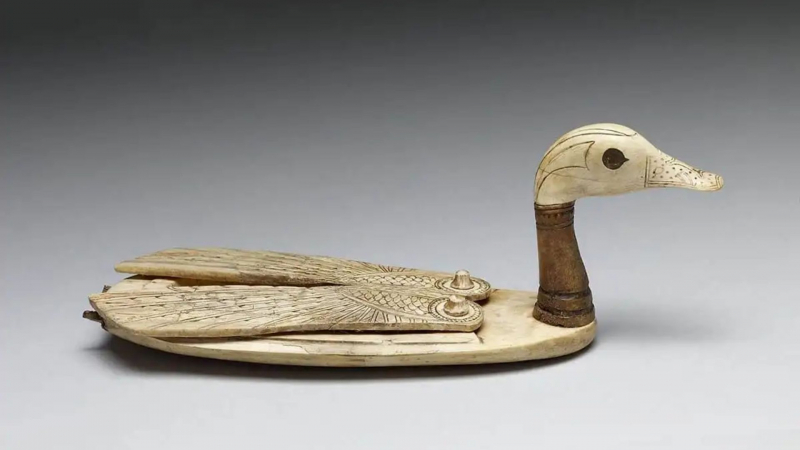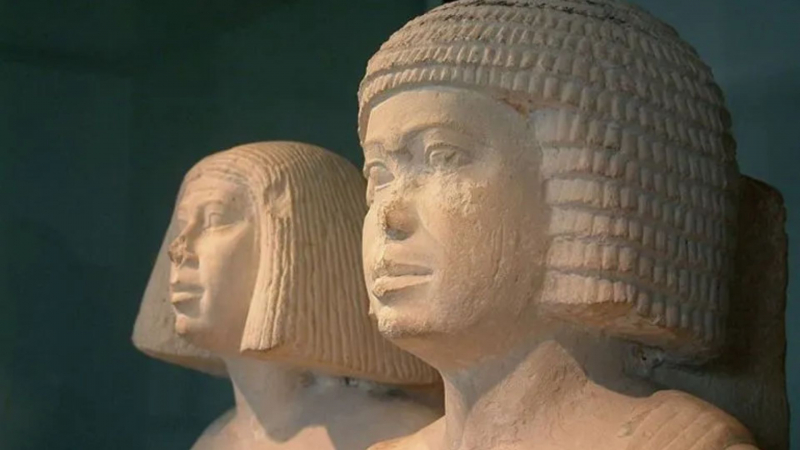Makeup And Wigs
People's time and effort had been tied up with the essentials of existence, procuring food and shelter for survival, with little time for anything else, for most of human history prior to ancient Egyptian civilization. However, as urbanization occurred, first in the Middle East and then in Egypt, and organized structures were put in place to care for the daily lives of their residents, we see the concepts of leisure and recreation emerge. As the set of skittles below clearly shows, people now had the time and energy to look beyond their fundamental needs.
This new fashion also made the Egyptian inventions of cosmetics and beauty regimens visible. Being attractive to the other sex has undoubtedly always been a priority for humans, whether this is due to biological factors, unconscious motivations, or conscious choices. However, the ancient Egyptians went a step further by creating a variety of rituals and products that highlight a woman's appearance. Beauty became a top priority for the affluent women of ancient Egypt who did not have to work, from shaving off undesirable hair with a wax-like substance made of sugar to enhancing facial features with makeup created from natural colors including crushed beetles and deadly lead.
Even while the invention of eye makeup may not be as significant as the invention of fire or the wheel, it nevertheless gives the Egyptians a run for their money. Eye makeup has never gone out of vogue since it was created in 4000 BCE. Even more astounding, certain aesthetically oriented societies continue to use the same methods developed by the Egyptians thousands of years ago to produce cosmetics. They created the black ointment known as kohl, which is still widely used today, by combining soot with a mineral known as galena. By tinting, the ointment with a mineral called malachite and galena, they could also manufacture green eye makeup.
Makeup was not just used by women in Egypt. Status and attractiveness went hand in hand, and the more cosmetics the better for the higher class. The Egyptians' renowned heavy touch with eyeliner was due to more than just fashion. They also believed that applying a thick coating of the substance might cure different eye problems and even protect them from the evil eye.
Wealthy Egyptians lived a refined lifestyle that represented their social level, therefore they paid close attention to their personal appearance. Wigs were very popular among Egyptian women. Wigs were frequently worn not only for fashion but also for protection, as individuals needed to protect their skin from the arid climate and harsh sun. While the most affordable and widely accessible wigs were made of vegetable fibers, the royal family had theirs manufactured entirely of human hair, frequently from Nubian peoples, to mimic the Afro style prominent throughout the second millennium BC.
The Egyptians were also known for their perfumes, which were manufactured from ingredients such as lily oil. Razors or depilatory treatments were used to eliminate body and facial hair. It's fascinating to note that both sexes wore make-up and wigs.
It comes as no surprise that Cleopatra was regarded as one of history's most gorgeous women. Many of her techniques, such as apple cider vinegar as a face toner, milk and honey baths to soften the skin, aloe vera for hydrating, natural henna for nail color, almond oil for younger skin, and honey for smooth hair, are still used today.

















